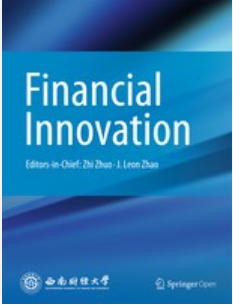利用底层多重解析动量指标和非线性机器学习回归算法对加密货币期权中的隐含波动率进行确定性建模
IF 7.2
1区 经济学
Q1 BUSINESS, FINANCE
引用次数: 0
摘要
隐含波动率(IV)建模对于期权定价、套期保值和风险管理非常重要。以往对确定性隐含波动率函数(DIVF)的研究提出了两个参数,即货币性(moneyness)和到期时间(time to maturity)来估计隐含波动率。最近的 DIVF 模型加入了移动平均比率和相对买卖价差等因素,但未能提高建模的准确性。由于投资者和投机者在做出交易决策时经常会用到动量指标,而且与波动率相比,相对强弱指数可以区分牛市和熊市,因此本研究提供了一种通用的 DIVF 模型,即使用涵盖多个时间分辨率的相对强弱指数(RSI)作为相关资产的动量指标。据我们所知,之前的研究并未将 RSI 作为预测因素纳入 IV 模型。我们没有像以前的研究那样使用简单的线性回归,而是使用了一种机器学习回归算法,即随机森林,来建立非线性 IV 模型。以往的研究将 DVIF 模型应用于股票和外汇市场等传统金融资产的期权。在这里,我们研究的是最大的加密货币比特币的期权,由于比特币的极端波动性以及对它的研究不如传统金融资产,这给建模带来了更大的挑战。为了开发和验证模型,我们从一家领先的加密货币期权交易所收集了为期四个月的最新比特币期权链数据。我们的数据集包括到期日少于六天的短期限期权和全货币性期权,这两种期权在现有研究中通常被排除在外,因为具有这些特征的期权价格通常波动很大,给模型构建带来了挑战。我们的样本内和样本外结果表明,加入我们提出的动量指标能显著提高模型对期权定价的准确性。非线性机器学习随机森林算法的表现也优于简单的线性回归。与采用随机变量的主流期权定价模型相比,我们的 DIVF 模型不包含随机因素,但表现出相当好的性能。由于可以获得实时 RSI,该模型也很容易计算。我们的研究结果表明,我们的增强型 DIVF 模型具有显著的改进,可以很好地替代以随机因素为主的现有期权定价模型。本文章由计算机程序翻译,如有差异,请以英文原文为准。
Deterministic modelling of implied volatility in cryptocurrency options with underlying multiple resolution momentum indicator and non-linear machine learning regression algorithm
Modeling implied volatility (IV) is important for option pricing, hedging, and risk management. Previous studies of deterministic implied volatility functions (DIVFs) propose two parameters, moneyness and time to maturity, to estimate implied volatility. Recent DIVF models have included factors such as a moving average ratio and relative bid-ask spread but fail to enhance modeling accuracy. The current study offers a generalized DIVF model by including a momentum indicator for the underlying asset using a relative strength index (RSI) covering multiple time resolutions as a factor, as momentum is often used by investors and speculators in their trading decisions, and in contrast to volatility, RSI can distinguish between bull and bear markets. To the best of our knowledge, prior studies have not included RSI as a predictive factor in modeling IV. Instead of using a simple linear regression as in previous studies, we use a machine learning regression algorithm, namely random forest, to model a nonlinear IV. Previous studies apply DVIF modeling to options on traditional financial assets, such as stock and foreign exchange markets. Here, we study options on the largest cryptocurrency, Bitcoin, which poses greater modeling challenges due to its extreme volatility and the fact that it is not as well studied as traditional financial assets. Recent Bitcoin option chain data were collected from a leading cryptocurrency option exchange over a four-month period for model development and validation. Our dataset includes short-maturity options with expiry in less than six days, as well as a full range of moneyness, both of which are often excluded in existing studies as prices for options with these characteristics are often highly volatile and pose challenges to model building. Our in-sample and out-sample results indicate that including our proposed momentum indicator significantly enhances the model’s accuracy in pricing options. The nonlinear machine learning random forest algorithm also performed better than a simple linear regression. Compared to prevailing option pricing models that employ stochastic variables, our DIVF model does not include stochastic factors but exhibits reasonably good performance. It is also easy to compute due to the availability of real-time RSIs. Our findings indicate our enhanced DIVF model offers significant improvements and may be an excellent alternative to existing option pricing models that are primarily stochastic in nature.
求助全文
通过发布文献求助,成功后即可免费获取论文全文。
去求助
来源期刊

Financial Innovation
Economics, Econometrics and Finance-Finance
CiteScore
11.40
自引率
11.90%
发文量
95
审稿时长
5 weeks
期刊介绍:
Financial Innovation (FIN), a Springer OA journal sponsored by Southwestern University of Finance and Economics, serves as a global academic platform for sharing research findings in all aspects of financial innovation during the electronic business era. It facilitates interactions among researchers, policymakers, and practitioners, focusing on new financial instruments, technologies, markets, and institutions. Emphasizing emerging financial products enabled by disruptive technologies, FIN publishes high-quality academic and practical papers. The journal is peer-reviewed, indexed in SSCI, Scopus, Google Scholar, CNKI, CQVIP, and more.
 求助内容:
求助内容: 应助结果提醒方式:
应助结果提醒方式:


